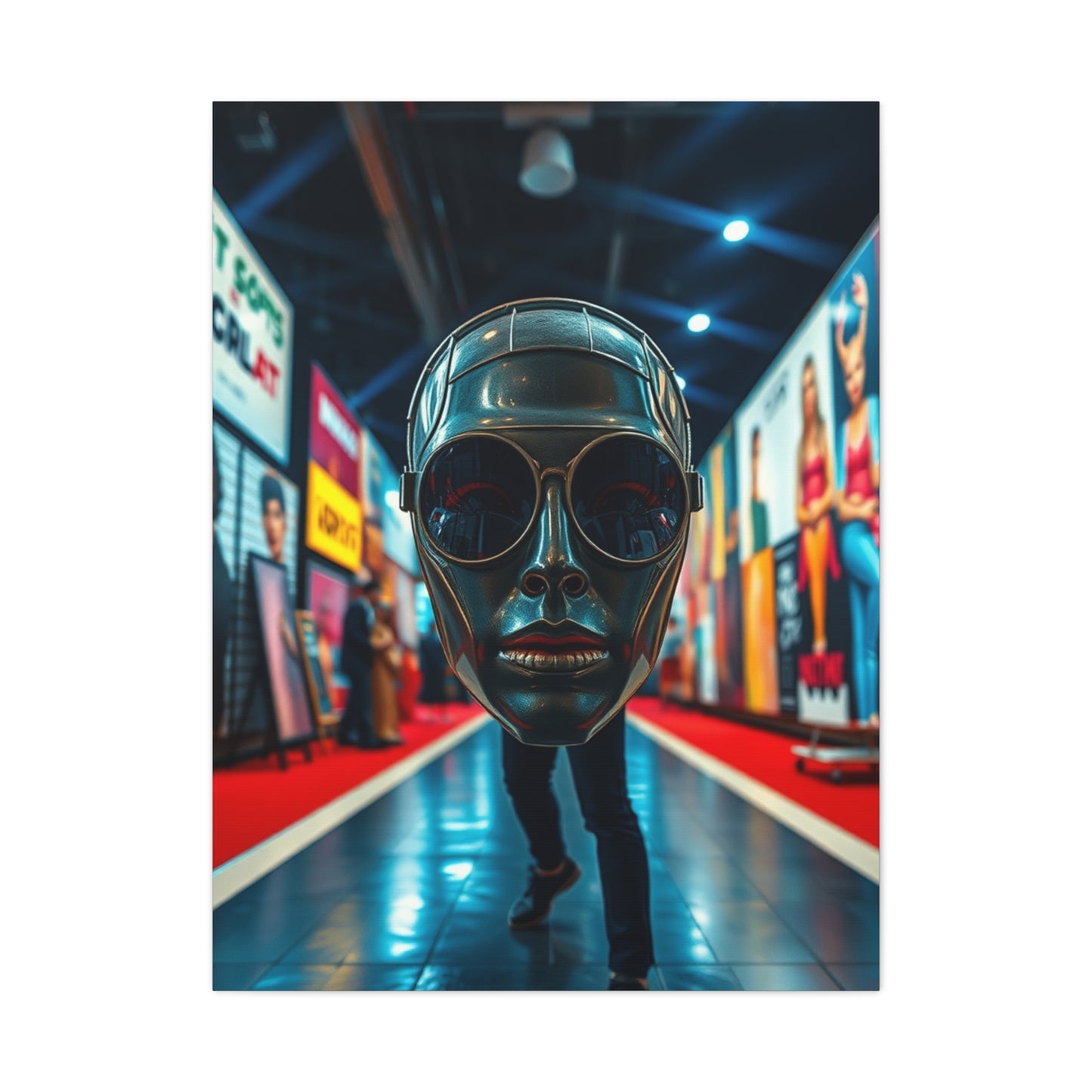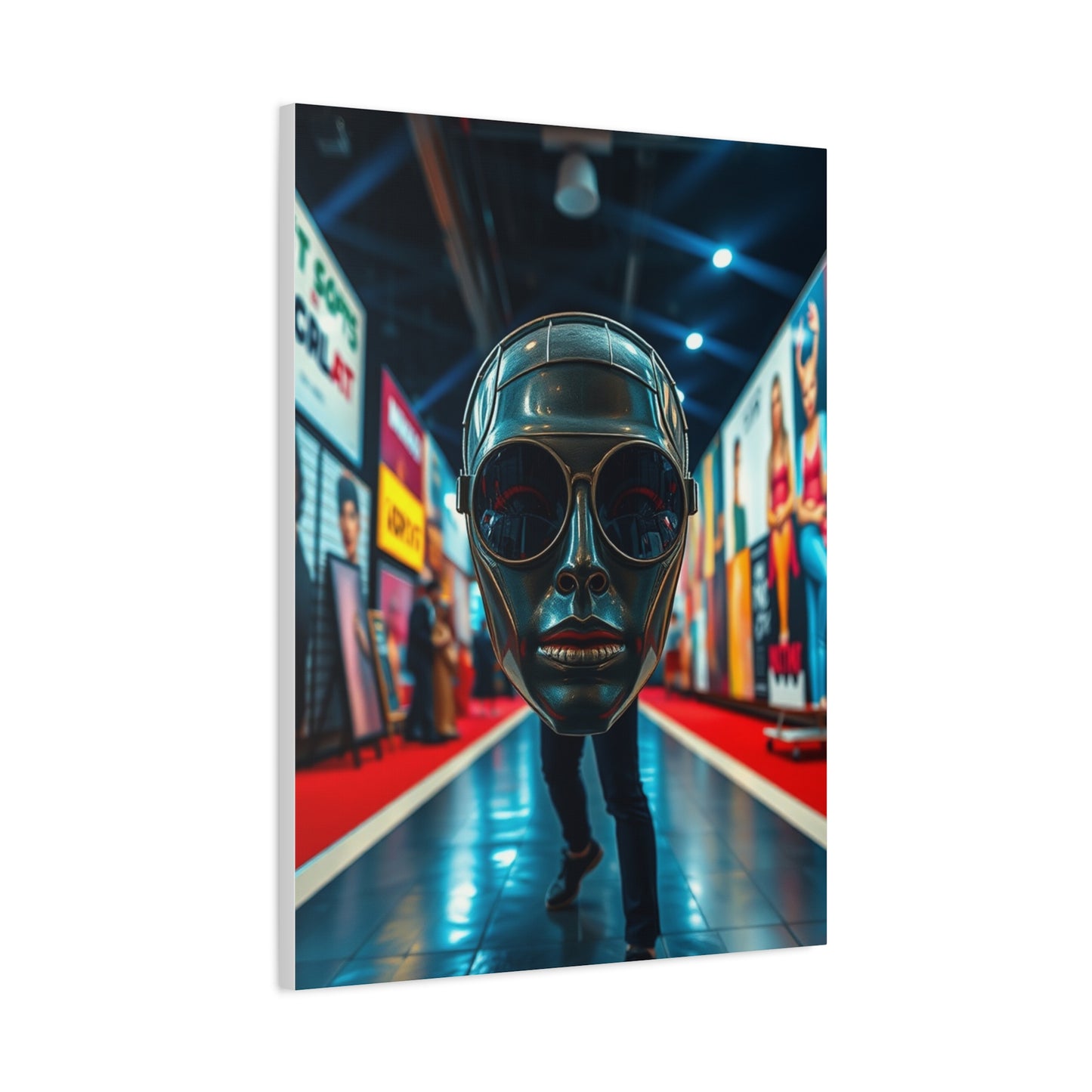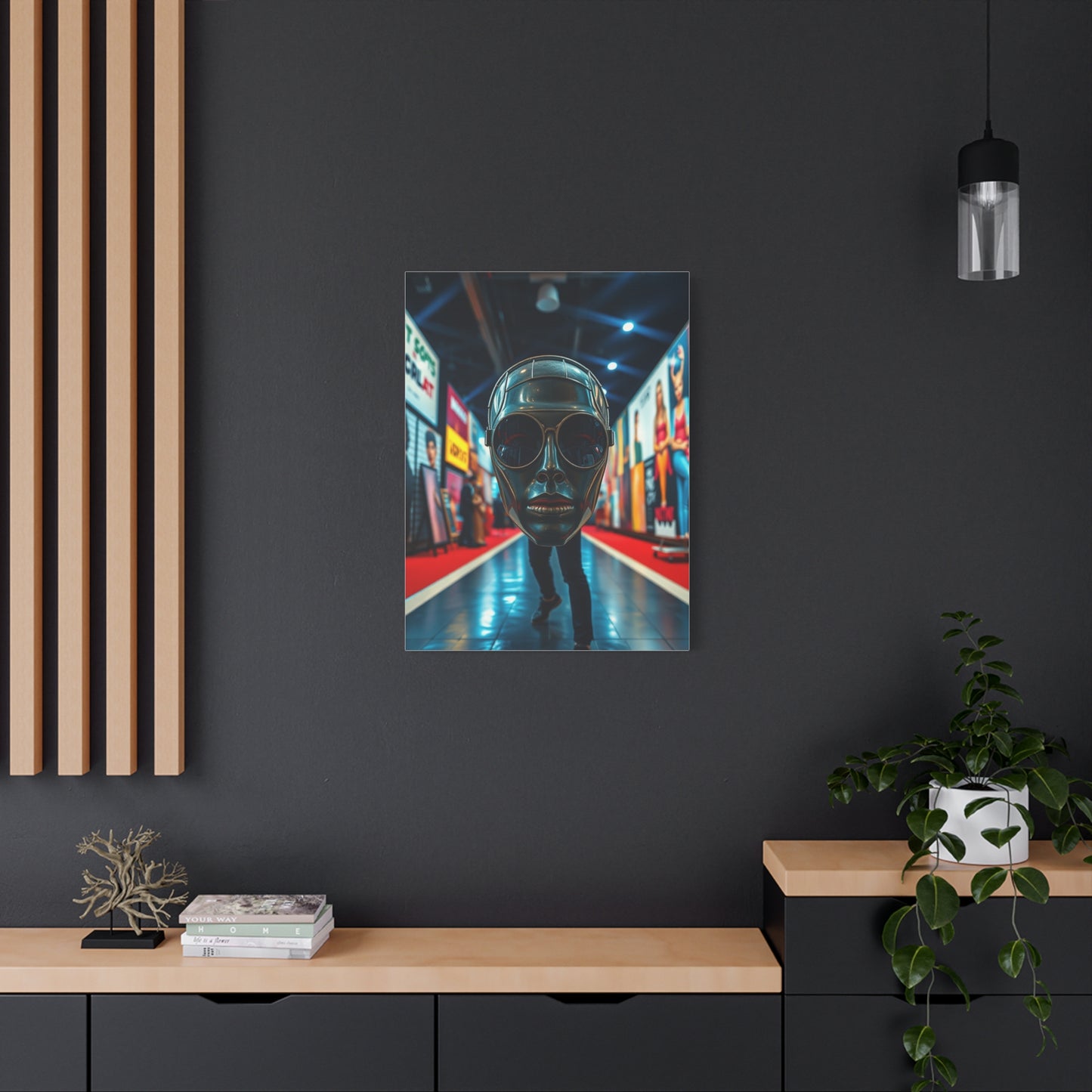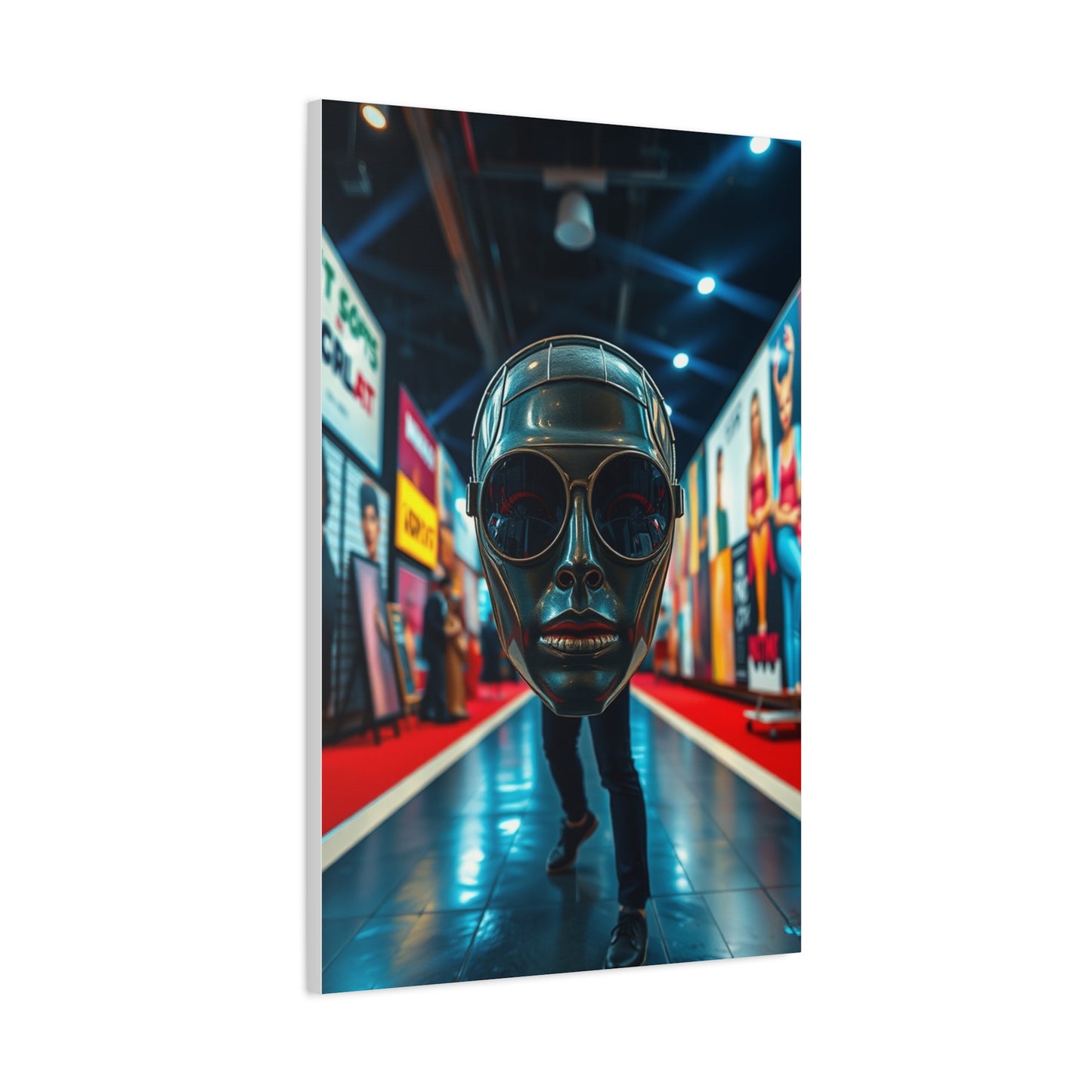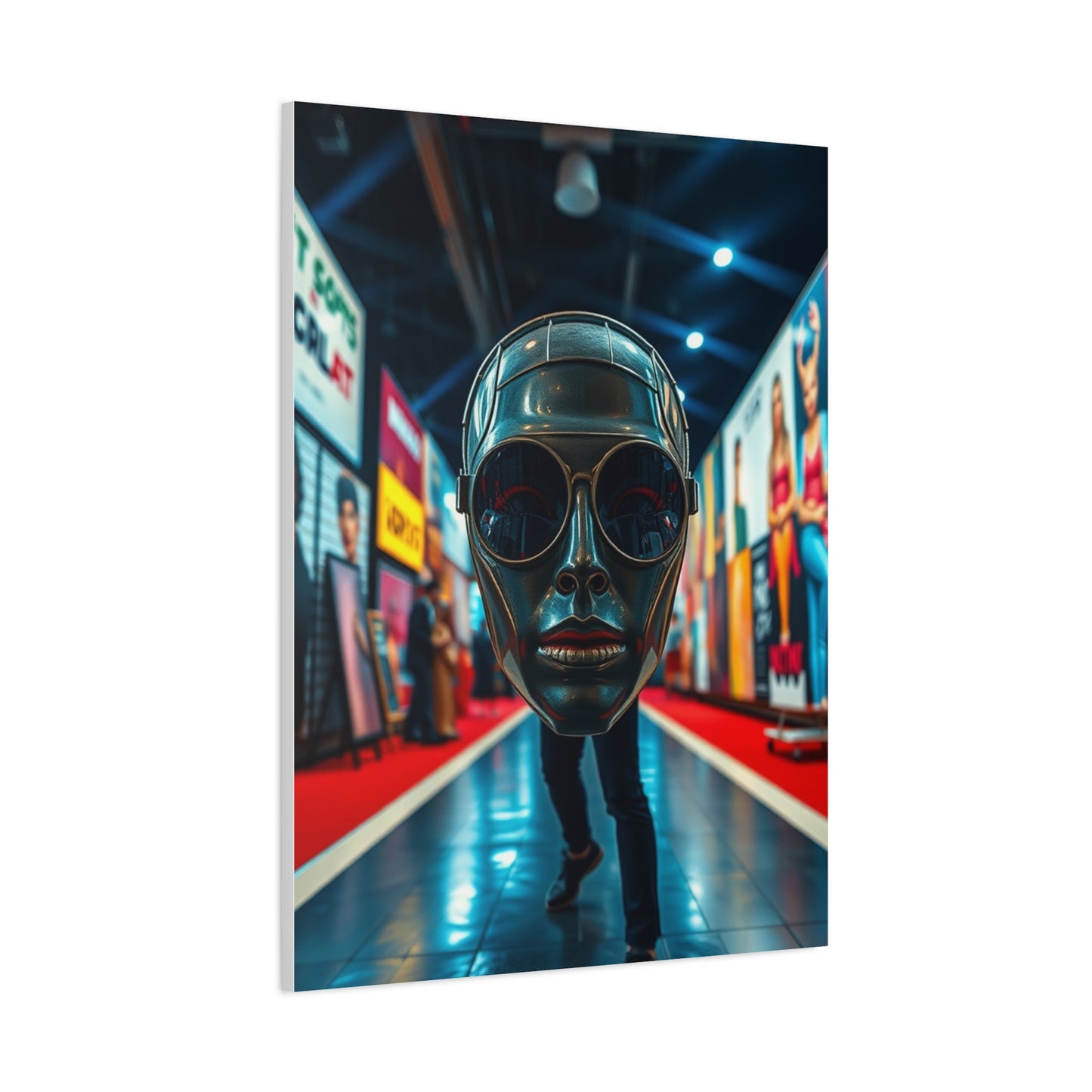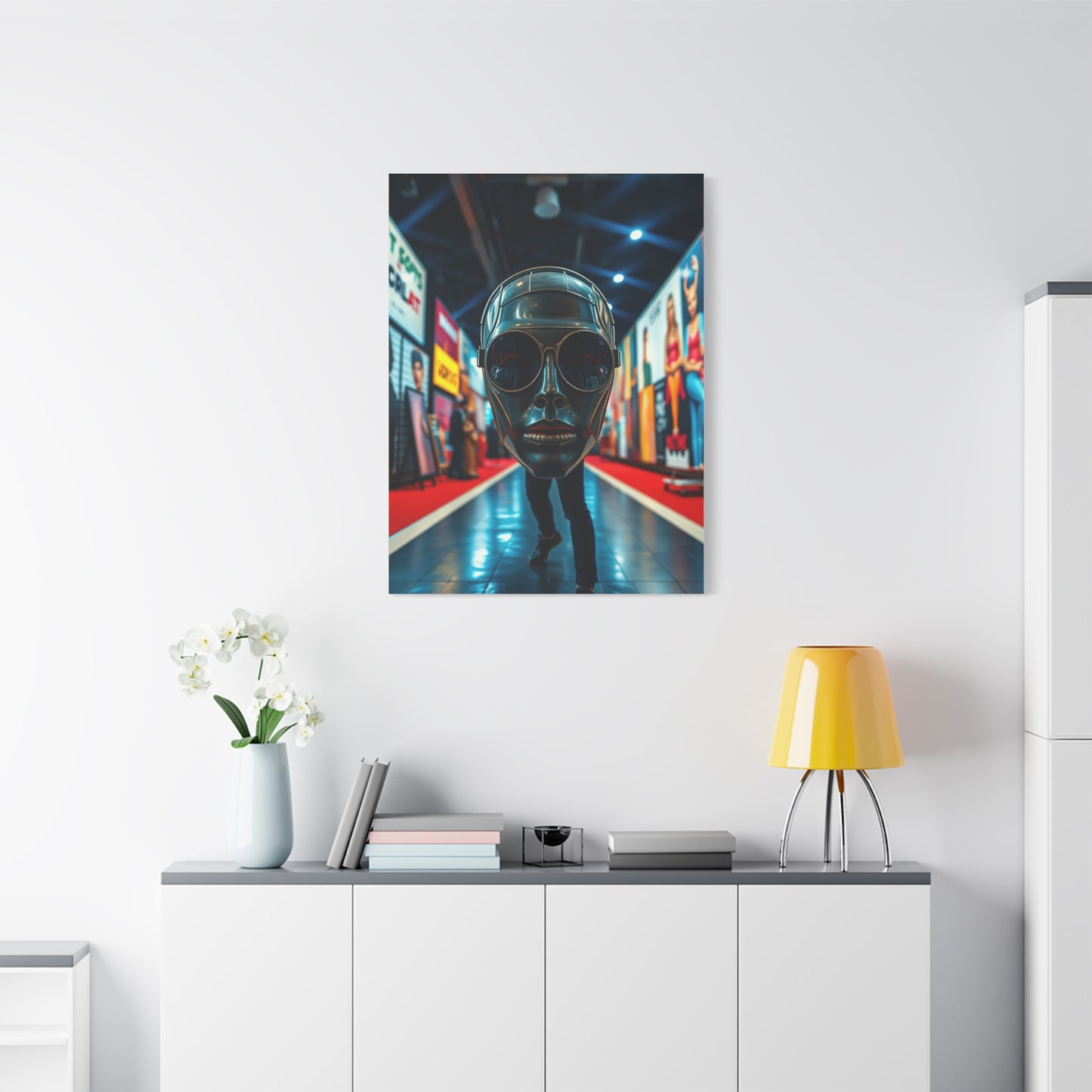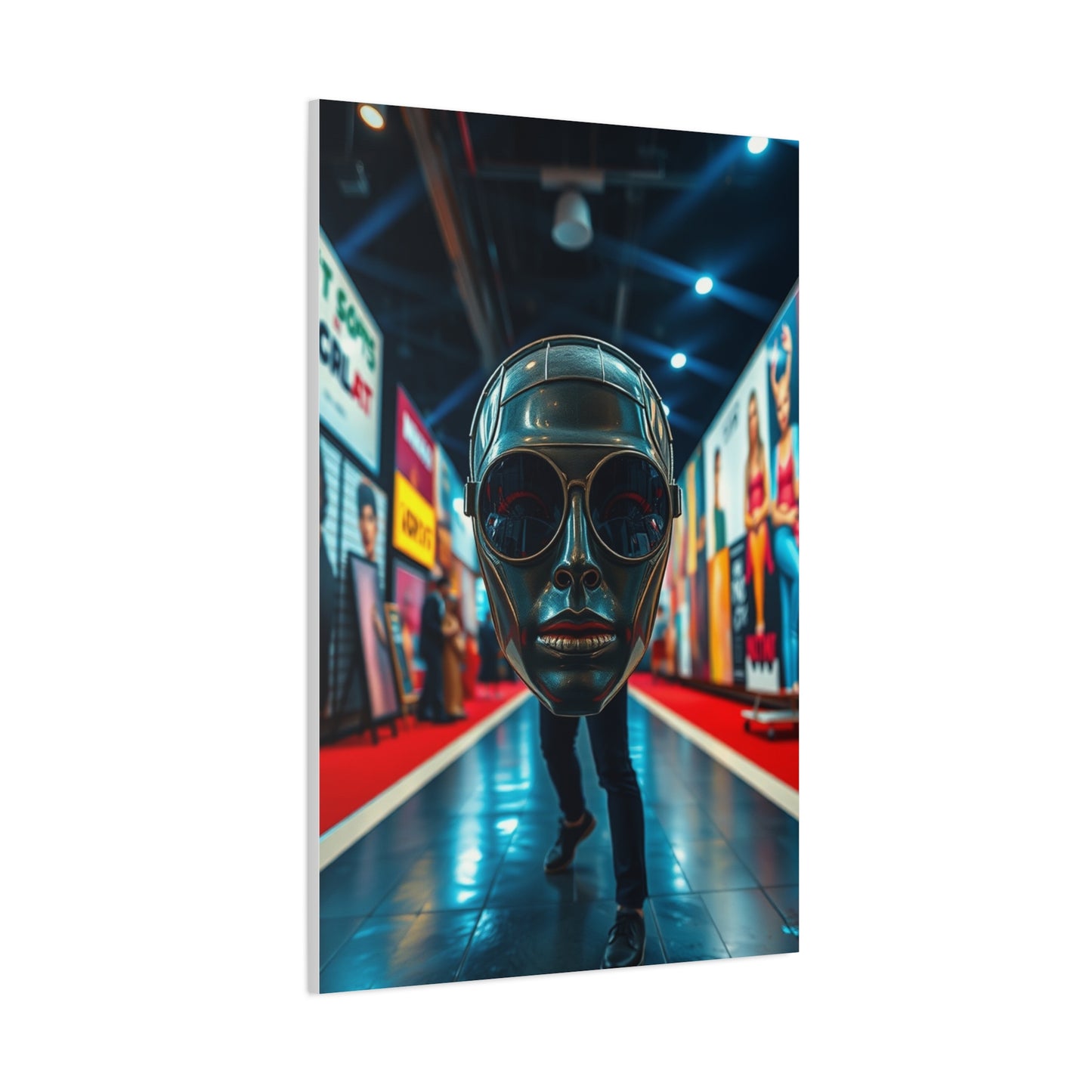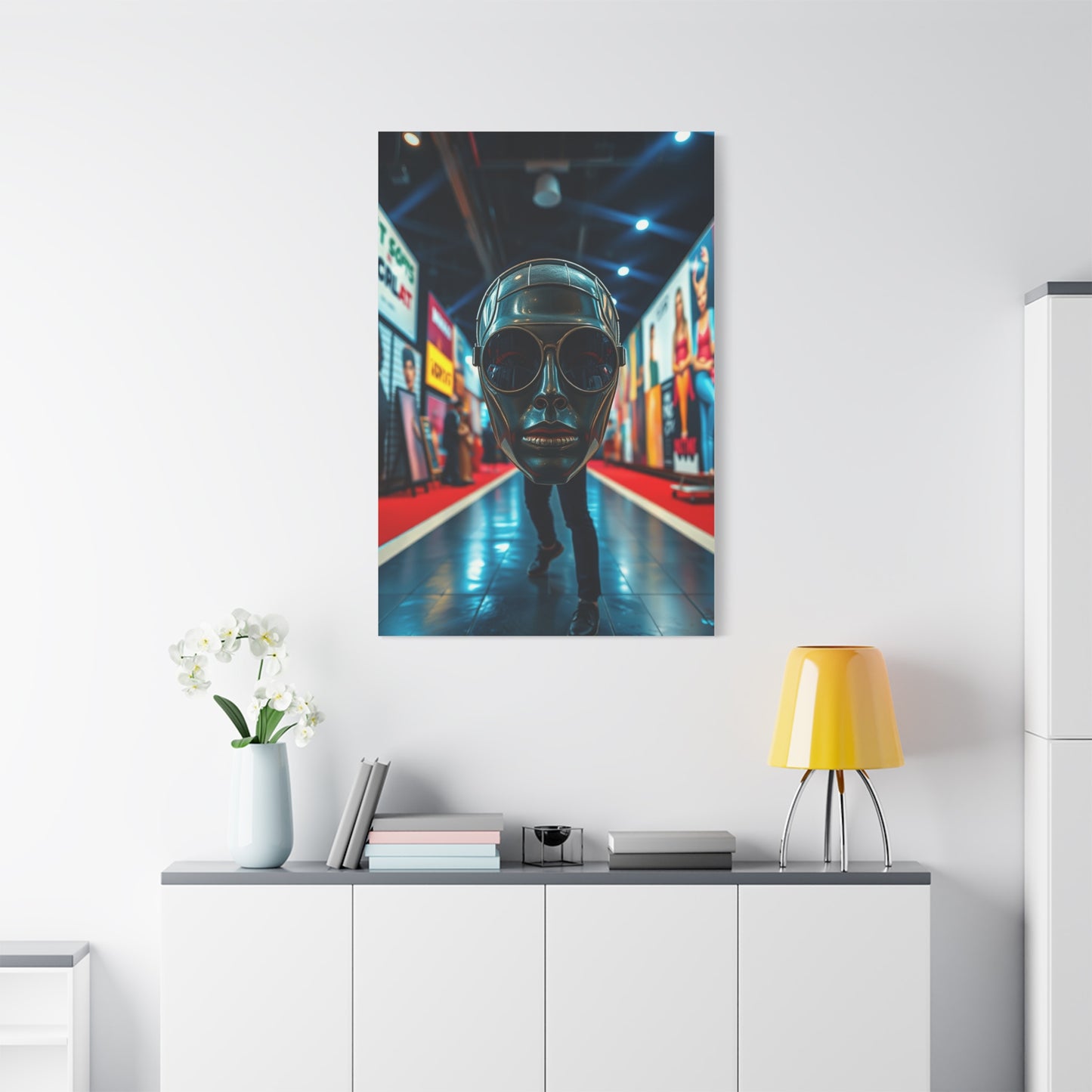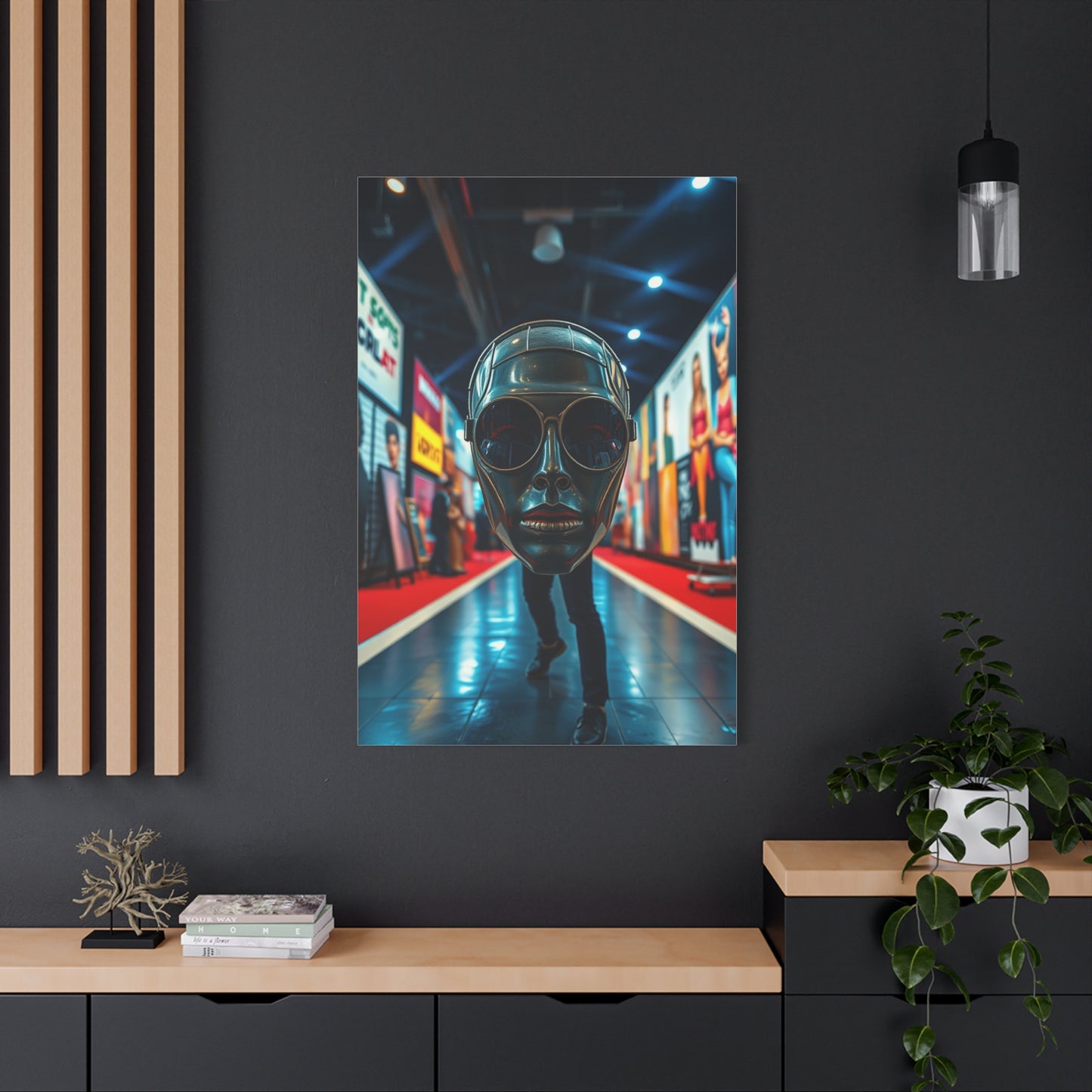Breaking the Mold: How Avant-Garde Brilliance Wall Art Pushes Creative Boundaries
The modern art landscape has undergone a remarkable transformation, bringing museum-quality visual experiences directly into residential and commercial environments. Contemporary visual compositions printed on premium materials have revolutionized how individuals interact with artistic expression in their daily surroundings. This comprehensive exploration delves into the intricate world of innovative artistic presentations that challenge conventional boundaries and redefine spatial aesthetics.
Understanding Avant-Garde Art: A Brief Overview
The term avant-garde refers to works of art that are experimental, innovative, or ahead of their time. It derives from the French military term for “advance guard,” signifying those who push ahead of the main force to explore new territories. In the context of art, avant-garde artists are those who venture beyond the mainstream, often rejecting established norms in favor of unconventional techniques, concepts, and mediums.
Emerging in the late 19th and early 20th centuries, avant-garde art challenged societal, political, and cultural norms. It questioned what art could be, where it could go, and how it could be experienced. The avant-garde movement is not confined to a particular style but is defined by a spirit of innovation and a desire to explore new artistic frontiers. Today, avant-garde art is not just confined to galleries or museums; it thrives in private collections, urban spaces, and digital realms, with wall art standing at the forefront of this creative revolution.
Redefining Aesthetics: Breaking Traditional Boundaries
One of the most striking aspects of avant-garde wall art is how it consistently redefines aesthetic norms. Traditional wall art typically follows established visual conventions, such as realistic representations or symmetrical designs. However, avant-garde wall art disrupts these expectations by embracing abstraction, distortion, and imperfection.
Take, for example, the works of modern abstract artists like Jackson Pollock, Mark Rothko, and Kazimir Malevich, whose pieces discarded the need for representational imagery in favor of pure form and color. Pollock’s drip paintings and Rothko’s color fields force the viewer to engage with the emotional and psychological dimensions of art, rather than focusing solely on the physical form. Similarly, Malevich’s Black Square (1915) is a radical departure from everything that came before it, signaling a complete break from representation and opening the door to new possibilities in modern art.
Today’s avant-garde wall art continues in this tradition of rethinking aesthetics. Artists experiment with unconventional materials, use mixed media, and explore new dimensions, creating art that is as much about the process as the finished product. The wall itself becomes a canvas for exploration, where paint may merge with sculpture, light, and even digital technology. This fusion of mediums expands the visual language of art, encouraging viewers to think about the relationship between the artwork and its environment in entirely new ways.
Pushing Conceptual Boundaries: Art Beyond the Visual
Avant-garde wall art goes beyond visual aesthetics; it challenges our conceptual understanding of what art can be. This expansion of boundaries often involves a blending of art with other disciplines such as philosophy, politics, technology, and sociology. Some of the most groundbreaking wall art today takes an interdisciplinary approach, encouraging viewers to engage intellectually as well as emotionally.
For instance, contemporary artists like Banksy have brought the world of street art into the mainstream, incorporating social commentary and political messages into their works. Banksy’s Girl with a Balloon, which appeared on a London street in 2002, became one of the most iconic images in contemporary art. The piece is deceptively simple, but its underlying themes—hope, loss, and the tension between innocence and destruction—strike a deep chord with audiences. Through the integration of public space and social engagement, Banksy and other street artists break down traditional barriers between art and audience, creating art that is both visually compelling and socially relevant.
Likewise, artists like Jenny Holzer use language as their primary medium, incorporating text into large-scale wall art pieces. Her Truisms series, which featured provocative statements displayed on electronic billboards, subverts the visual emphasis of traditional art and draws attention to the power of language in shaping our perception of the world. Holzer’s art challenges the passive role of the viewer by making them actively engage with the ideas presented, further pushing the boundaries of what art can communicate.
Technology and Digital Art: The Future of Avant-Garde Wall Art
The rise of digital technology has opened up new avenues for avant-garde artists to explore, and it has revolutionized the way we experience wall art. Digital tools and techniques allow artists to create dynamic, interactive, and immersive works that could never have been imagined in the past. Digital projection mapping, virtual reality (VR), and augmented reality (AR) are now being incorporated into wall art, creating an entirely new dimension to the artistic experience.
For example, artists like Refik Anadol use machine learning algorithms and data visualization techniques to create mesmerizing digital installations. His Machine Hallucinations project transforms data from the physical world into abstract, ever-changing visuals projected onto walls. This process opens up the possibility of art that is not static but rather evolves in response to new inputs and interactions, reflecting the fluidity and complexity of contemporary life.
Additionally, the rise of NFTs (non-fungible tokens) has introduced a new way for digital artists to create and share their works. By minting digital art as unique, verifiable tokens, artists can sell and trade their creations in a decentralized market. NFT-based art collections, such as those seen in the Bored Ape Yacht Club, have demonstrated that the future of art may not only involve new techniques and concepts but also new ways of owning and experiencing it.
In this digital age, the concept of what constitutes wall art has been further expanded. While physical canvases and sculptures remain a staple of the avant-garde tradition, the incorporation of technology into the creation and display of wall art challenges the very notion of what a “wall” is. Walls themselves become canvases for digital projections or augmented reality, allowing for a level of interactivity and fluidity previously unimaginable.
Breaking Cultural Norms: Globalization and Cross-Cultural Influences
Avant-garde art today is not confined to a specific geographic location or cultural tradition. The globalization of art has led to an exciting exchange of ideas and styles across cultures. Artists from diverse backgrounds are combining traditional elements with avant-garde techniques, creating wall art that transcends cultural boundaries and speaks to a global audience.
Contemporary avant-garde wall art often draws on multicultural influences, from African and Asian aesthetics to Western pop culture. Artists like Kehinde Wiley incorporate historical references, reimagining classical portraiture in a way that challenges dominant Western ideals of beauty and representation. Wiley’s The Virginian (2012) reinterprets an 18th-century portrait of George Washington, replacing the figure with a young Black man. Through this subversion of classical art forms, Wiley critiques the racial power structures that have historically shaped art and society.
Similarly, Mexican artist Carlos Amorales uses his work to bridge the gap between different cultural and artistic traditions. His The Animal That Looks Like Me series blends elements of folk art with surreal, abstract imagery, creating wall art that resonates with both his Mexican heritage and a global audience. Amorales’ work exemplifies how the avant-garde movement, though often associated with Western art traditions, is increasingly informed by a multiplicity of voices from around the world.
Ongoing Evolution of Avant-Garde Wall Art
Avant-garde wall art continues to push creative boundaries in ways that were once unimaginable. It is no longer confined to the elitist halls of galleries or confined to a narrow definition of what art “should” be. Instead, avant-garde artists today are redefining the very concept of art by embracing innovation, experimentation, and interdisciplinary exploration. Whether through the use of new technologies, the integration of social and political commentary, or the blending of diverse cultural influences, avant-garde wall art challenges us to rethink how we perceive the world around us.
The transformative power of avant-garde art lies not only in its ability to surprise and inspire but also in its capacity to break down barriers, both literal and figurative. By pushing the limits of creativity, it invites us to question the status quo, reimagine possibilities, and engage with art on a deeper, more meaningful level. As long as artists continue to break the mold, the future of wall art remains a vibrant and ever-evolving space where innovation and imagination have no boundaries.
Understanding Progressive Visual Expression in Contemporary Design
The evolution of artistic presentation has created unprecedented opportunities for individuals to curate personalized visual environments. Modern printing technologies have democratized access to sophisticated artistic compositions, allowing homeowners and designers to incorporate gallery-level aesthetics into everyday spaces. These contemporary presentations combine technical precision with creative vision, producing results that captivate viewers and elevate atmospheric quality.
The distinction between traditional artistic presentations and modern interpretations lies in their approach to visual communication. Where conventional methods relied heavily on established techniques and recognizable imagery, contemporary approaches embrace experimental methodologies, unconventional color palettes, and abstract conceptualizations. This paradigm shift reflects broader cultural movements toward individualism, creative freedom, and the rejection of prescriptive aesthetic standards.
Progressive artistic compositions challenge viewers to engage with visual content on multiple levels. Rather than presenting immediately recognizable subjects or narratives, these works invite contemplation, interpretation, and emotional response. The ambiguity inherent in many contemporary pieces creates space for personal connection, allowing each observer to derive unique meaning from the same visual elements. This interactive quality distinguishes modern artistic expressions from their more didactic predecessors.
The technical capabilities of contemporary printing processes have expanded creative possibilities exponentially. High-resolution digital reproduction preserves intricate details, subtle color gradations, and textural nuances that would have been impossible to replicate decades ago. Advanced pigment formulations ensure longevity and color stability, protecting investments in visual aesthetics for generations. These technological advances have eliminated many barriers between artistic vision and practical implementation.
Exploring Experimental Design Methodologies
Experimental approaches to visual composition prioritize innovation over convention, often incorporating unexpected elements that surprise and engage viewers. These methodologies draw inspiration from diverse sources, including urban environments, natural phenomena, mathematical principles, and emotional states. The resulting compositions frequently feature bold geometric arrangements, dramatic color contrasts, or intricate layering techniques that create depth and movement.
The intellectual foundations of experimental design trace back to early twentieth-century artistic movements that questioned established norms. Pioneers challenged representational accuracy as the primary measure of artistic merit, instead exploring how form, color, and composition could convey meaning independently. This philosophical shift opened doors for successive generations to pursue increasingly abstract and conceptual approaches.
Contemporary practitioners of experimental design employ sophisticated digital tools that enable precise manipulation of visual elements. Software applications provide unprecedented control over color theory application, spatial relationships, and textural effects. This technological empowerment allows artists to iterate rapidly, exploring countless variations before settling on final compositions. The digital workflow also facilitates seamless translation from concept to physical production.
Material selection plays a crucial role in realizing experimental visions. Premium substrates provide the foundation for faithful color reproduction and long-term stability. Specialized coatings enhance visual properties such as depth, saturation, and light interaction. The physical characteristics of chosen materials contribute significantly to the overall impact of finished pieces, influencing how viewers perceive and interact with the artwork.
Revolutionary Color Theory Applications
Color relationships form the emotional and psychological core of visual compositions. Progressive approaches to color utilization often depart from harmonious palettes in favor of unexpected juxtapositions that create tension, energy, or intrigue. These unconventional combinations challenge viewer expectations, prompting deeper engagement with the work. Understanding how different hues interact allows designers to craft experiences that resonate on subconscious levels.
The psychological impact of color cannot be overstated. Warm tones evoke feelings of comfort, passion, or urgency, while cool shades suggest tranquility, professionalism, or introspection. Advanced practitioners manipulate these associations deliberately, creating complex emotional landscapes within single compositions. The strategic deployment of contrasting temperatures adds dynamism and prevents visual monotony.
Saturation levels dramatically affect the mood and intensity of visual presentations. Highly saturated compositions command attention and project confidence, making them ideal for spaces designed to energize or inspire. Conversely, desaturated or monochromatic approaches convey sophistication, minimalism, or contemplative qualities. The ability to modulate saturation provides another dimension for artistic expression and spatial customization.
Value contrast, the relationship between light and dark elements, establishes visual hierarchy and guides viewer attention. High-contrast compositions create drama and focus, emphasizing specific elements while subordinating others. Low-contrast approaches produce subtlety and cohesion, encouraging comprehensive viewing rather than fixation on particular areas. Mastering value relationships enables designers to control the viewing experience deliberately.
Geometric Abstraction and Spatial Dynamics
Geometric approaches to visual composition utilize fundamental shapes and mathematical relationships to create order, rhythm, and visual interest. These methodologies range from rigid grid systems to organic arrangements that suggest geometry without strict adherence. The precision inherent in geometric design appeals to viewers who appreciate structure and intellectual rigor in their visual environments.
The interplay between positive and negative space becomes particularly important in geometric compositions. Skilled practitioners use voids as actively as filled areas, creating balanced relationships that feel complete despite apparent emptiness. This sophisticated understanding of spatial dynamics separates novice efforts from professional-grade compositions that demonstrate mastery over the entire visual field.
Repetition and pattern generation constitute fundamental techniques in geometric abstraction. Repeated elements establish rhythm and predictability, which can be disrupted strategically to create focal points or suggest movement. The balance between repetition and variation determines whether compositions feel static or dynamic. Contemporary approaches often incorporate algorithmic generation, producing complex patterns that would be impractical to create manually.
Dimensionality in geometric work extends beyond simple flat shapes. Layering techniques create implied depth, suggesting three-dimensional forms on two-dimensional surfaces. Perspective manipulation, overlapping elements, and shadow effects contribute to spatial illusion. These techniques engage viewer perception, creating visual puzzles that reward careful examination.
Organic Forms and Natural Inspiration
Natural phenomena provide endless inspiration for contemporary visual expressions. Organic approaches eschew rigid geometry in favor of flowing lines, irregular shapes, and asymmetrical balance. These compositions often evoke natural processes such as growth, decay, flow, or transformation. The resulting works feel alive and dynamic, contrasting sharply with the static quality of overly controlled designs.
Biomimicry, the practice of emulating natural patterns and structures, has gained significant traction in progressive design circles. Fractal patterns, found throughout nature from coastlines to branching trees, create visually complex yet harmonious compositions. These mathematically derived structures appeal to innate human preferences shaped by evolutionary exposure to natural environments.
Textural elements borrowed from natural sources add tactile interest to visual compositions. Representations of wood grain, stone surfaces, water movement, or atmospheric phenomena introduce familiar elements that ground abstract compositions in tangible reality. This connection to physical experience helps viewers relate to otherwise purely conceptual works.
The color palettes of natural environments offer sophisticated inspiration for contemporary compositions. Earth tones, sky gradations, and botanical hues provide tested combinations that feel inherently balanced. Contemporary interpretations often exaggerate or manipulate these natural palettes, maintaining their essential relationships while pushing saturation, contrast, or value to create heightened visual impact.
Minimalist Approaches to Maximum Impact
Minimalism represents a philosophical approach that prioritizes essentials while eliminating superfluous elements. In visual composition, this translates to carefully considered arrangements featuring limited elements, restrained color palettes, and generous negative space. The discipline required to achieve effective minimalism often exceeds that needed for more elaborate compositions, as every element must justify its inclusion.
The power of minimalist presentations lies in their clarity and focus. Without competing visual elements, viewer attention concentrates fully on what remains. This intensity of focus creates memorable impressions and allows subtle details to register fully. Minimalist environments promote contemplation and mental clarity, making them particularly suitable for spaces dedicated to concentration or relaxation.
Achieving balance in minimalist work requires sophisticated understanding of visual weight and spatial relationships. A single element positioned imperfectly can unbalance an entire composition. The relationship between the visual subject and surrounding space must feel intentional and resolved. This precision demands careful experimentation and refined aesthetic judgment.
Color limitation in minimalist approaches often focuses on monochromatic or analogous palettes. This restraint creates cohesion and sophistication while allowing form and composition to dominate. When color contrasts do appear in minimalist work, they carry significant impact due to the surrounding simplicity. Strategic color deployment becomes a powerful tool for creating emphasis and directing attention.
Maximalist Energy and Visual Abundance
Maximalism embraces complexity, layering, and visual richness. These compositions overflow with elements, colors, textures, and details that reward extended viewing. Rather than seeking restraint, maximalist approaches celebrate abundance and visual stimulation. This aesthetic appeals to individuals who appreciate immersive environments and reject the austerity of minimalist alternatives.
The challenge in maximalist composition lies in maintaining coherence amid complexity. Without unifying principles, maximalist work can devolve into chaotic visual noise. Successful practitioners establish rhythms, color relationships, or thematic connections that thread through apparent complexity, providing structure beneath the surface abundance. This hidden order distinguishes sophisticated maximalism from simple visual clutter.
Layering techniques form the foundation of effective maximalist presentations. Multiple visual planes create depth and encourage exploration as viewers discover new elements with each examination. This quality of revealing information gradually over time creates lasting engagement and prevents the quick visual exhaustion that can accompany simpler compositions.
Color management in maximalist work requires confidence and skill. While these compositions often feature extensive palettes, successful examples demonstrate thoughtful color relationships rather than random assemblages. Dominant colors provide anchoring points, while accent hues create variety and interest. The overall effect should feel intentional and composed despite apparent complexity.
Textural Complexity and Surface Qualities
Texture, whether actual or implied, adds crucial dimensional quality to visual presentations. Printed reproductions can suggest various surface qualities through careful rendering and printing techniques. Representations of rough, smooth, glossy, matte, or irregular surfaces create visual interest and invite imagined tactile engagement. This sensory dimension enhances viewer connection to otherwise purely visual experiences.
Contemporary printing technologies enable remarkable textural reproduction. High-resolution capture preserves minute surface variations, while advanced printing processes translate these details faithfully. Specialized inks and coatings can enhance textural effects, creating surfaces that respond dynamically to changing light conditions. These technical capabilities allow printed works to approach the physical presence of original creations.
Contrasting textures within single compositions create visual tension and interest. Smooth areas provide rest for the eye and emphasize adjacent complex regions. Alternating textural qualities establish rhythm and prevent monotony. The strategic distribution of textural elements guides viewer attention and contributes to overall compositional balance.
Implied texture through technique rather than subject matter demonstrates advanced artistic skill. Brushstroke representations, stippling effects, or digital manipulations that suggest physical texture without depicting specific surfaces showcase technical mastery. These approaches create visual interest while maintaining abstract or non-representational compositions.
Monochromatic Sophistication
Compositions limited to single-color families demonstrate how value, saturation, and temperature variations can create complete visual experiences without relying on contrasting hues. Monochromatic approaches project sophistication and unity while challenging artists to achieve interest through means other than color variety. These restraints often produce elegant, cohesive results that integrate seamlessly into diverse environments.
The selection of base color for monochromatic work significantly impacts emotional tone and spatial effects. Blues suggest calm and coolness, making spaces feel larger and more serene. Warm monochromes in red or orange families create intimacy and energy. Neutral monochromes provide versatility and timeless appeal. Understanding these associations allows deliberate mood creation through color choice.
Value range within monochromatic compositions determines visual dynamics. High-contrast monochromatic work maintains drama and visual interest despite color limitation. Low-contrast approaches create subtlety and sophistication, requiring careful viewing to appreciate fully. The chosen value range should align with the intended atmospheric effect and viewing context.
Texture and form carry increased importance in monochromatic presentations. Without color variation to create interest, these other visual elements must compensate. Complex textures, interesting shapes, and sophisticated compositions become essential rather than optional. This constraint often leads to stronger overall design as artists cannot rely on color alone to engage viewers.
Dynamic Movement and Visual Flow
Creating the illusion of movement in static compositions engages viewers and adds life to visual presentations. Techniques for suggesting motion include directional lines, graduated color transitions, repeated elements that imply progression, and asymmetrical balance that creates visual tension. These approaches transform static images into dynamic experiences that feel energetic and alive.
Compositional lines guide viewer attention through visual fields. Diagonal lines create the strongest sense of movement, suggesting action and change. Curved lines feel organic and flowing, creating smooth visual journeys. The strategic arrangement of elements along these implied paths controls how viewers explore compositions, ensuring important areas receive appropriate attention.
Graduated transitions in color, value, or texture create smooth visual flow. These gradations suggest transformation and progression, preventing abrupt visual discontinuities that can feel jarring. Skillful use of gradients adds sophistication and polish to compositions while maintaining visual interest across entire surfaces.
Asymmetrical balance contributes to dynamic feeling by creating visual tension. Unlike symmetrical arrangements that feel stable and static, asymmetry suggests potential movement and change. The eye works to resolve these tensions, creating active rather than passive viewing experiences. This engagement sustains interest and creates memorable impressions.
Atmospheric Depth and Spatial Illusion
Creating convincing depth on flat surfaces represents a fundamental artistic challenge. Contemporary approaches employ various techniques including overlapping elements, size variation, atmospheric perspective, and strategic focus manipulation. These methods trick viewer perception into experiencing dimensionality where none physically exists, creating immersive visual experiences.
Overlapping forms provide clear depth cues as foreground elements obscure background components. This simple yet effective technique establishes spatial relationships and creates layered compositions. The arrangement of overlapping elements can guide viewer attention through multiple visual planes, encouraging thorough exploration of the entire composition.
Atmospheric perspective mimics how distance affects visual clarity. Elements appearing closer show sharp detail and strong contrast, while distant elements become softer and less distinct. Color shifts toward blue-grey in distant areas replicate atmospheric effects observed in nature. These subtle cues trigger innate perceptual mechanisms, creating convincing spatial depth.
Selective focus effects borrowed from photography create depth through clarity variation. Sharply rendered foreground or focal elements contrast with deliberately softened surrounding areas, directing attention while suggesting dimensional space. This technique proves particularly effective in compositions seeking photographic realism or contemporary aesthetic sensibilities.
Cultural Fusion and Global Influences
Contemporary visual expression increasingly reflects our interconnected global culture. Compositions incorporating elements from diverse aesthetic traditions create rich, multicultural visual experiences. These fusion approaches honor various artistic heritages while creating something entirely new. The resulting works reflect contemporary reality where cultural boundaries blur and influence flows multidirectionally.
Eastern aesthetic principles have significantly influenced progressive approaches. Concepts such as negative space appreciation, asymmetrical balance, and nature reverence appear frequently in contemporary compositions. The minimalist sensibilities and philosophical depth characteristic of Eastern traditions resonate with modern audiences seeking meaningful visual experiences.
Indigenous artistic traditions contribute unique perspectives on pattern, symbolism, and color relationships. The geometric abstractions of various native cultures have inspired contemporary designers seeking authentic connection to artistic heritage. Incorporating these influences respectfully requires understanding their cultural significance and avoiding superficial appropriation.
European artistic movements from cubism through constructivism continue influencing contemporary expression. The experimental spirit and technical innovations of these historical periods established precedents that current practitioners extend and reinterpret. Understanding this lineage provides context for appreciating how contemporary work relates to broader artistic evolution.
Material Innovation and Production Excellence
The physical substrate for printed visual expressions significantly impacts final quality and longevity. Premium materials ensure color accuracy, dimensional stability, and resistance to environmental degradation. Contemporary production utilizes various substrate options, each offering distinct characteristics suited to different applications and aesthetic goals.
Canvas materials provide traditional appeal with contemporary production advantages. Modern synthetic canvases overcome natural fiber limitations while maintaining desirable textural qualities. The stretched presentation creates dimensional presence and shadows that enhance visual impact. Canvas textures interact interestingly with printed images, adding subtle surface variation.
Archival quality papers offer smooth surfaces ideal for fine detail reproduction. Various finishes from matte to glossy provide options for different visual effects and viewing conditions. Paper presentations suit more formal or traditional environments while maintaining contemporary artistic content. Proper framing protects these more delicate substrates while adding aesthetic framing.
Metal substrates create striking contemporary presentations with unique visual properties. The smooth, reflective surfaces produce extraordinary color vibrancy and depth. Metal prints offer excellent durability and modern aesthetic appeal. The material itself contributes to the artwork's impact, creating presentations that feel cutting-edge and contemporary.
Acrylic presentations provide depth and luminosity through transparent layering. Prints mounted behind clear acrylic appear to float dimensionally while gaining color saturation and visual depth. The glossy surface creates dramatic light interaction, making these presentations particularly effective in well-lit environments. Acrylic offers premium aesthetic impact suited to high-end applications.
Scale Considerations and Spatial Relationships
Appropriate sizing dramatically affects visual impact and spatial integration. Oversized presentations command attention and can anchor entire rooms, while smaller works create intimate viewing experiences. Understanding the relationship between artwork dimensions and surrounding architecture ensures harmonious integration rather than awkward mismatches.
Ceiling height establishes the upper limit for vertical artwork dimensions. Pieces that approach ceiling height create dramatic vertical emphasis and make spaces feel more expansive. Conversely, maintaining significant space above artwork prevents cramped feelings and allows the piece to breathe within its environment. The appropriate relationship depends on overall room proportions and design intentions.
Wall length influences horizontal dimension decisions. Large expanses benefit from substantial artwork or multiple pieces arranged strategically. Narrow walls require more modest dimensions to maintain balance. The principle of visual weight suggests that artwork should occupy roughly two-thirds to three-quarters of available wall space for optimal impact without overwhelming.
Viewing distance affects appropriate scale and detail level. Pieces intended for close examination can feature intricate details that reward careful viewing. Works designed for appreciation from greater distances require bolder elements and stronger color contrasts to maintain visual impact. Understanding typical viewing distances for specific spaces ensures appropriate artistic choices.
Multiple piece arrangements offer flexibility and scalability. Gallery walls composed of related works can fill large areas while maintaining visual interest through variety. Diptych and triptych presentations create horizontal flow and narrative progression. These multi-piece approaches suit contemporary aesthetics while providing practical solutions for challenging spaces.
Installation Strategies for Maximum Effect
Proper installation transforms artwork from mere decoration into integral architectural elements. Strategic placement considers lighting conditions, sight lines, furniture relationships, and spatial flow. Professional installation techniques ensure security while maintaining the clean presentation essential for contemporary aesthetics.
Eye-level placement provides the traditional standard, positioning artwork centers approximately sixty inches from the floor. This height accommodates average viewer perspectives and creates comfortable viewing angles. Variations from this standard should occur deliberately for specific effects rather than through careless installation.
Lighting design dramatically affects artwork presentation. Natural light offers beautiful illumination but requires consideration of direct sun exposure that can damage sensitive materials. Artificial lighting should provide even illumination without glare or hot spots. Adjustable fixtures allow fine-tuning to achieve optimal presentation conditions.
Furniture relationships require careful consideration during placement decisions. Artwork hung above furniture should relate proportionally, typically spanning roughly two-thirds of the furniture width. Sufficient space between furniture tops and artwork bottoms prevents cramped feelings while maintaining visual connection between elements.
Architectural features such as windows, doors, and built-ins influence placement options. Rather than competing with these permanent elements, artwork should complement and enhance them. Symmetrical placement around architectural features creates formal balance, while asymmetrical arrangements produce more dynamic, contemporary feelings.
Color Psychology in Spatial Design
Understanding how colors affect mood, perception, and behavior enables strategic deployment for desired atmospheric effects. Color choices influence everything from apparent room temperature to perceived spatial dimensions. Progressive designers leverage color psychology deliberately to create environments supporting specific activities and emotional states.
Warm colors advance visually, making walls appear closer and spaces feel more intimate. Reds, oranges, and yellows create energy and stimulation, making them appropriate for active spaces but potentially overwhelming in rest areas. These hues increase perceived temperature and can make cool or dark rooms feel more inviting. Strategic warm color placement energizes without overwhelming.
Cool colors recede visually, creating impressions of greater space and distance. Blues, greens, and purples promote calm and concentration, making them ideal for work areas and bedrooms. These hues lower perceived temperature and create serene atmospheres. Overuse can feel cold or sterile, requiring careful balance with warmer accent elements.
Neutral colors provide versatility and timeless appeal. Grays, beiges, and off-whites create sophisticated backgrounds that accommodate changing design preferences. These flexible foundations allow bold accent colors in artwork and accessories without creating overwhelming visual competition. Neutral environments feel calm and collected while remaining interesting through textural variation.
Color temperature affects perceived ambiance significantly. Even within single color families, warm and cool variations create different effects. Warm whites feel cozy and traditional, while cool whites appear modern and crisp. Understanding these subtle distinctions enables precise atmospheric control through seemingly minor color choices.
Contemporary Aesthetic Integration
Modern interior design increasingly embraces eclecticism over strict stylistic adherence. This flexibility allows artwork to bridge various design elements, creating cohesion through visual connections rather than matching. Progressive visual expressions complement contemporary aesthetics through shared principles of innovation, quality, and intentional design.
Industrial aesthetics with exposed materials and raw finishes pair surprisingly well with sophisticated artwork. The contrast between rough architectural elements and refined visual presentations creates dynamic tension and interest. This juxtaposition demonstrates how apparently opposing aesthetics can coexist productively when thoughtfully combined.
Scandinavian design principles of simplicity, functionality, and natural materials align naturally with many contemporary artistic approaches. The clean lines and restrained color palettes characteristic of Nordic design provide perfect foundations for statement artwork. The resulting combinations feel cohesive and sophisticated while maintaining visual interest.
Mid-century modern aesthetics continue influencing contemporary design through their emphasis on clean lines, organic forms, and integration of indoor and outdoor spaces. Artwork selections that echo these principles create harmonious environments that feel both retro-inspired and thoroughly contemporary. The timeless quality of mid-century design ensures lasting appeal.
Bohemian eclecticism embraces pattern mixing, global influences, and personal expression. This aesthetic freedom accommodates diverse artwork selections united through personal preference rather than strict stylistic rules. The resulting environments feel curated and individual, reflecting occupant personalities rather than following prescriptive design formulas.
Investment Value and Lasting Quality
Quality visual presentations represent significant investments deserving protection and preservation. Understanding factors affecting longevity enables informed decisions that ensure continued enjoyment for years or decades. Premium materials and production methods justify their costs through superior performance and lasting value.
Archival inks formulated for fade resistance maintain color integrity despite light exposure and environmental conditions. These specialized pigments significantly outlast conventional alternatives, protecting visual investments. When combined with appropriate substrates and protective finishes, archival inks ensure decades of enjoyment without noticeable degradation.
UV protection through specialized glazing or coatings prevents the primary cause of artwork deterioration. Ultraviolet radiation breaks down pigments and substrates, causing fading and yellowing. Quality protective measures filter harmful wavelengths while maintaining visual clarity and color accuracy. This protection proves essential for pieces displayed in naturally lit environments.
Environmental control including temperature and humidity management extends artwork lifespan. Extreme conditions or rapid fluctuations cause physical stress leading to warping, cracking, or delamination. Maintaining stable, moderate conditions prevents these issues. While residential environments rarely require museum-level control, awareness of environmental factors enables protective measures.
Professional maintenance including periodic cleaning and inspection identifies potential issues before they cause significant damage. Dust accumulation, frame deterioration, or mounting failure respond well to early intervention. Establishing relationships with professional conservators provides access to expertise when specialized care becomes necessary.
Curation Principles for Personal Collections
Developing cohesive collections requires vision extending beyond individual piece selection. Successful collections demonstrate thematic, stylistic, or conceptual relationships that create dialogue between works. This curatorial thinking elevates random acquisitions into meaningful assemblages that increase in value and interest collectively.
Thematic collection building focuses on subject matter, concept, or mood connections. Collections might explore color relationships, geometric abstraction, natural forms, or emotional landscapes. This focus provides direction for acquisition decisions while allowing flexibility within chosen parameters. Thematic coherence creates powerful collective impact exceeding individual piece contributions.
Artist-focused collecting celebrates particular creators whose vision resonates personally. Following individual artistic evolution provides insight into creative processes and conceptual development. These collections document artistic journeys while potentially offering investment appreciation as artists gain recognition. The personal connection to specific creators adds meaningful dimension to collecting.
Investment-oriented collecting requires research into artistic trends, emerging talents, and market dynamics. Balancing personal aesthetic preferences with potential appreciation demands careful consideration. While not every piece will increase in value, thoughtful selections from promising creators can yield both aesthetic and financial returns.
Emotional collection building prioritizes personal response over external validation. Pieces that evoke strong feelings or meaningful memories create deeply personal collections. This approach produces environments reflecting occupant personalities and experiences. The resulting collections may lack conventional coherence but possess authentic personal significance.
Future Directions in Visual Expression
Contemporary artistic practice continues evolving through technological advancement, cultural shifts, and creative experimentation. Emerging trends suggest directions for future development while building on established foundations. Understanding these trajectories enables informed participation in evolving artistic conversations.
Digital integration increasingly blurs boundaries between physical and virtual presentation. Augmented reality applications overlay digital content onto physical artwork, creating layered experiences. These technologies enable dynamic presentations that change over time or respond to viewer interaction. The marriage of traditional and digital approaches opens unprecedented creative possibilities.
Sustainability concerns influence material selection and production methods. Environmentally conscious practices including renewable materials, non-toxic inks, and waste reduction appeal to ecologically minded consumers. This shift toward sustainable production methods addresses growing awareness of environmental impact without compromising aesthetic quality.
Customization technologies enable personalized artwork creation at accessible price points. Digital tools allow individuals to influence color palettes, compositional elements, or scale while maintaining artistic integrity. This democratization of customization provides satisfying personal expression opportunities within professional frameworks.
Interactive elements transform passive viewing into participatory experiences. Motion sensors, lighting changes, or mechanical components create dynamic presentations that evolve over time or respond to presence. These innovations challenge traditional notions of static artwork while creating memorable, engaging experiences.
Conclusion:
The landscape of contemporary visual expression represents an extraordinary convergence of artistic innovation, technological capability, and accessibility. Modern reproduction methods have demolished barriers that once restricted sophisticated aesthetic experiences to elite spaces, bringing gallery-quality presentations into everyday environments. This democratization empowers individuals to curate personalized visual landscapes that enhance daily life while expressing individual taste and values.
Understanding the diverse approaches within contemporary artistic expression enables informed selection aligned with personal preferences and spatial requirements. Whether drawn to minimalist restraint or maximalist abundance, geometric precision or organic flow, viewers can find expressions resonating with their aesthetic sensibilities. The breadth of available options ensures suitable selections for virtually any space, style preference, or atmospheric goal.
Material considerations significantly impact both immediate presentation quality and long-term satisfaction. Investing in premium substrates, archival inks, and professional production methods ensures pieces maintain their visual integrity throughout extended ownership. These quality foundations justify initial investments through superior performance and lasting value. The physical characteristics of chosen materials contribute substantially to overall aesthetic impact and viewing experience.
Installation and placement decisions determine how effectively artwork integrates into broader spatial contexts. Thoughtful consideration of scale relationships, lighting conditions, and architectural features ensures harmonious integration rather than awkward imposition. Professional installation techniques protect investments while achieving clean, contemporary presentations. The relationship between artwork and surrounding elements deserves careful attention during planning and implementation phases.
Color psychology and compositional principles provide frameworks for understanding how visual elements affect perception and emotion. Strategic deployment of these principles enables deliberate atmospheric creation supporting specific activities and moods. Whether seeking energizing stimulation or calming tranquility, informed color and composition choices guide spatial experiences toward intended outcomes. This knowledge transforms subjective preference into intentional design strategy.
The evolving nature of contemporary artistic practice ensures continued innovation and discovery. Emerging technologies, changing cultural perspectives, and creative experimentation constantly introduce new possibilities and approaches. Remaining engaged with these developments enriches appreciation while informing future acquisition decisions. The dynamic quality of contemporary expression means there are always new discoveries to make and fresh perspectives to explore.
Building thoughtful collections requires vision extending beyond individual acquisitions. Whether following thematic threads, celebrating particular creators, or simply responding to personal emotional resonance, curatorial thinking elevates assemblages from random accumulations to meaningful collections. The relationships between pieces create dialogue and amplify individual contributions. This collective dimension adds depth and interest unavailable through single works.
The investment dimension of quality visual presentations deserves consideration alongside aesthetic factors. While primary motivation should stem from genuine appreciation rather than purely financial calculation, understanding value preservation through quality materials and emerging artist selection adds practical dimension to acquisition decisions. Pieces that provide both aesthetic satisfaction and potential appreciation deliver comprehensive value.
Environmental integration requires balancing visual impact with spatial harmony. Artwork should enhance rather than dominate environments, creating focal points without overwhelming. This balance depends on appropriate scale selection, thoughtful placement, and consideration of existing design elements. When successfully achieved, the integration feels natural and intentional rather than forced or arbitrary.
Cultural appreciation for diverse artistic traditions enriches contemporary practice through cross-pollination of ideas and techniques. The global nature of contemporary culture enables unprecedented access to aesthetic perspectives from around the world. This diversity expands creative possibilities while requiring respectful engagement that honors cultural significance rather than superficial appropriation. The resulting fusion approaches create uniquely contemporary expressions impossible in more isolated contexts.
Technical excellence in production ensures faithful realization of artistic visions. Advanced printing technologies, specialized materials, and skilled craftsmanship transform concepts into tangible presentations. The technical dimension enables rather than constrains creativity, providing tools for increasingly sophisticated expression. Appreciation for production quality enhances understanding of how vision becomes reality.
Personal engagement with visual expression enriches daily experience beyond superficial decoration. Thoughtfully selected presentations provoke contemplation, stimulate creativity, and provide aesthetic pleasure that enhances quality of life. This elevation of everyday experience through intentional aesthetic curation represents an accessible form of self-care and environmental optimization. The cumulative effect of living among meaningful visual expressions contributes significantly to overall wellbeing.
The accessibility of contemporary presentations removes traditional barriers to sophisticated aesthetic environments. Quality no longer requires prohibitive budgets or exclusive access. This democratization enables diverse populations to create personalized spaces reflecting individual values and preferences. The resulting diversity of aesthetic expression enriches cultural landscape while empowering personal creative expression.
Educational value emerges from engaging with progressive visual expressions. Exposure to innovative approaches expands aesthetic literacy and appreciation for creative problem-solving. Understanding how artists manipulate color, form, and composition to achieve specific effects develops visual intelligence applicable across contexts. This educational dimension adds lasting value beyond immediate aesthetic pleasure.
The transformative potential of quality visual presentations extends beyond individual spaces to influence broader cultural conversations about design, accessibility, and aesthetic value. As sophisticated expressions become increasingly available and appreciated, collective design literacy rises. This cultural shift elevates expectations and encourages continued innovation. Individual choices to engage with quality visual expression contribute to this broader cultural evolution.
Maintenance and preservation practices protect investments while ensuring continued enjoyment. Understanding proper care including cleaning methods, environmental control, and damage prevention extends artwork lifespan significantly. Professional conservation resources provide specialized expertise when needed. The relatively modest effort required for basic maintenance yields substantial returns through preserved value and appearance.
Future developments promise continued expansion of creative possibilities through technological innovation and evolving artistic practice. Staying informed about emerging trends, new materials, and innovative approaches enriches participation in contemporary visual culture. The dynamic nature of this field ensures perpetual discovery and engagement opportunities. This forward-looking perspective maintains freshness and relevance throughout extended engagement with visual expression.
Ultimately, the decision to incorporate progressive visual expressions into personal environments represents a commitment to aesthetic quality, creative innovation, and intentional living. These choices reflect values extending beyond superficial decoration to embrace meaningful engagement with visual culture. The resulting environments provide daily enrichment through beauty, stimulation, and personal expression. This elevation of everyday experience through thoughtful curation demonstrates how accessible design choices create profound impact on quality of life and environmental satisfaction.



















